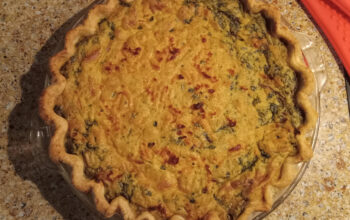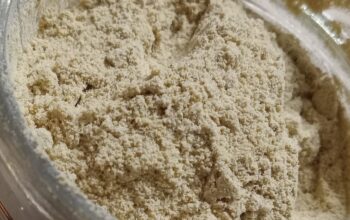Plant-based Milk/Buttermilk
Plain milk is a STAPLE! What does the word “staple” mean to me? It is something that I must make as soon as I run out. Plant-based butter, milk, cheese, etc. are things needed by other recipes that I do not want to have to make when I am making the other recipes. You may feel differently and that’s okay.
Why is making a non-dairy milk important? Well, because of Hosea 4:3 KJV, which may be used on this blog many times because it says that in the last days of earth’s history, right before Jesus comes in the clouds of glory, the land with the beasts are going to mourn and languish, or become diseased. The many recalls of everything animal are a testimonies to what days we are living in now. So, as I do not advocate animal flesh, I also do not advocate their by-products either. Our bodies are temples, which are to be kept in health.
Plant-based milk is very simple to make. My basic recipe is a one-half to one cup of almonds/cashews to two or three cups of water depending upon how thin I want my milk, I like my milk thicker. I tend to use various combinations to make my milk; so in the place of one of the cups of water, I may use 1 cup of pure coconut milk, which I believe makes the milk smooth and gives it a more a dairy taste to my taste buds. However, most of the time, I use no water, but only coconut milk (I wanted to give you the variations, just in case coconut milk or cream is not on hand). I strain the almond-coconut milk, but I find the cashew-coconut milk doesn’t need to be strained for my liking. You may feel differently. If you combine almond and cashews, you still need to strain for milk. I do not feel the need to strain for buttermilk.
Now, my buttermilk is heavier than my regular milk. I believe that good things come to those who wait. It took me a long time to get here. I used to suffer from impatience, but the Lord has directed my life in such a way that now I know that patience is a precious thing. Any recipe online will tell you that buttermilk is ready in 10 minutes, but I’ll tell you that your buttermilk is so much better the next day! If you can wait, wait. If you cannot wait, I understand. If you keep a bit of the cultured buttermilk, even a half cup and add your fresh buttermilk to it, it speeds up the process, but I seldom do this. I usually know what I am going to make before I make my buttermilk. I try never to run out of it.
One last thing! Don’t be afraid to shake it up! It will separate. Don’t worry about this, just shake! I find the buttermilk lasts about a week and a half. The creamer about a week; so a tip is that if I am not using my creamer fast enough, turn that into buttermilk! *smile* Now, without further ado…
Plant-based Milk or Buttermilk
Ingredients:
- 3 cups pure water or coconut milk (not cream)
- 1 cup almonds (or cashew, or nut/seed combo, soaked–I soak my nuts for 48 hours. Be sure to change the water each day!)
- BUTTERMILK ONLY: Add 2 Tablespoons freshly squeeze lemon juice
Instructions:
- Blend almonds/cashews and coconut milk together.
- Upon blending, strain for a smooth to remove any grit (only strain for the almonds if you cannot stand the grit).
- For milk, pour it into a container and you’re done! You may add a natural sweetener, but I usually leave this out because I have multiple uses for my milk.
- For buttermilk, add the lemon juice. Let buttermilk sit for about 24-48 hours before using (Most people let it set for 10 minutes only, but I find I like how it cultures for up to 48 hours), and it will thicken and will have absorbed some of the liquid. I shake it and add more pure water filling the jar to the brim. I shake again. If it makes no difference to you, you may use it after 10 minutes!
- For creamer, I just make thicker milk by reducing liquid used to blend by half.





